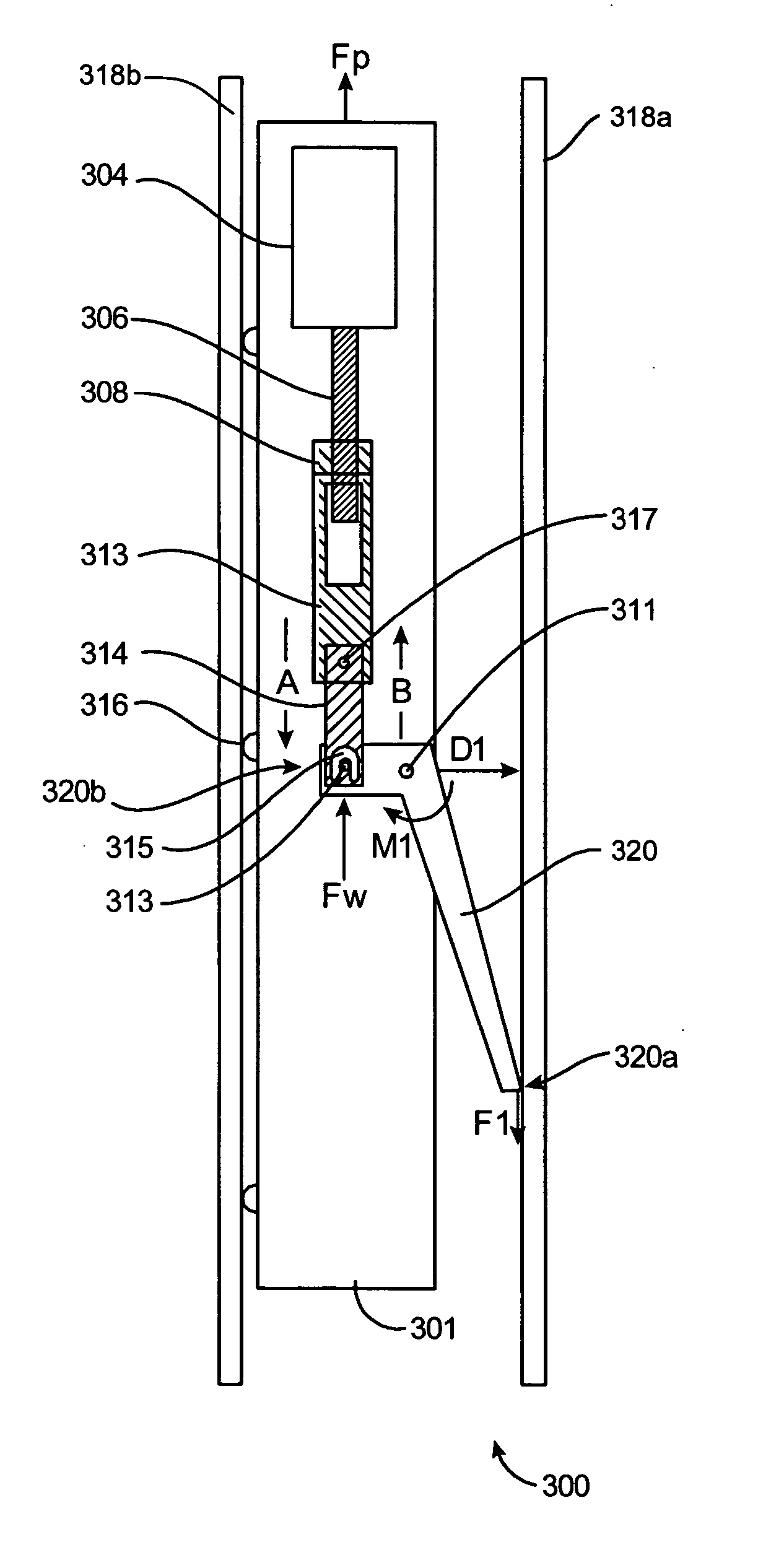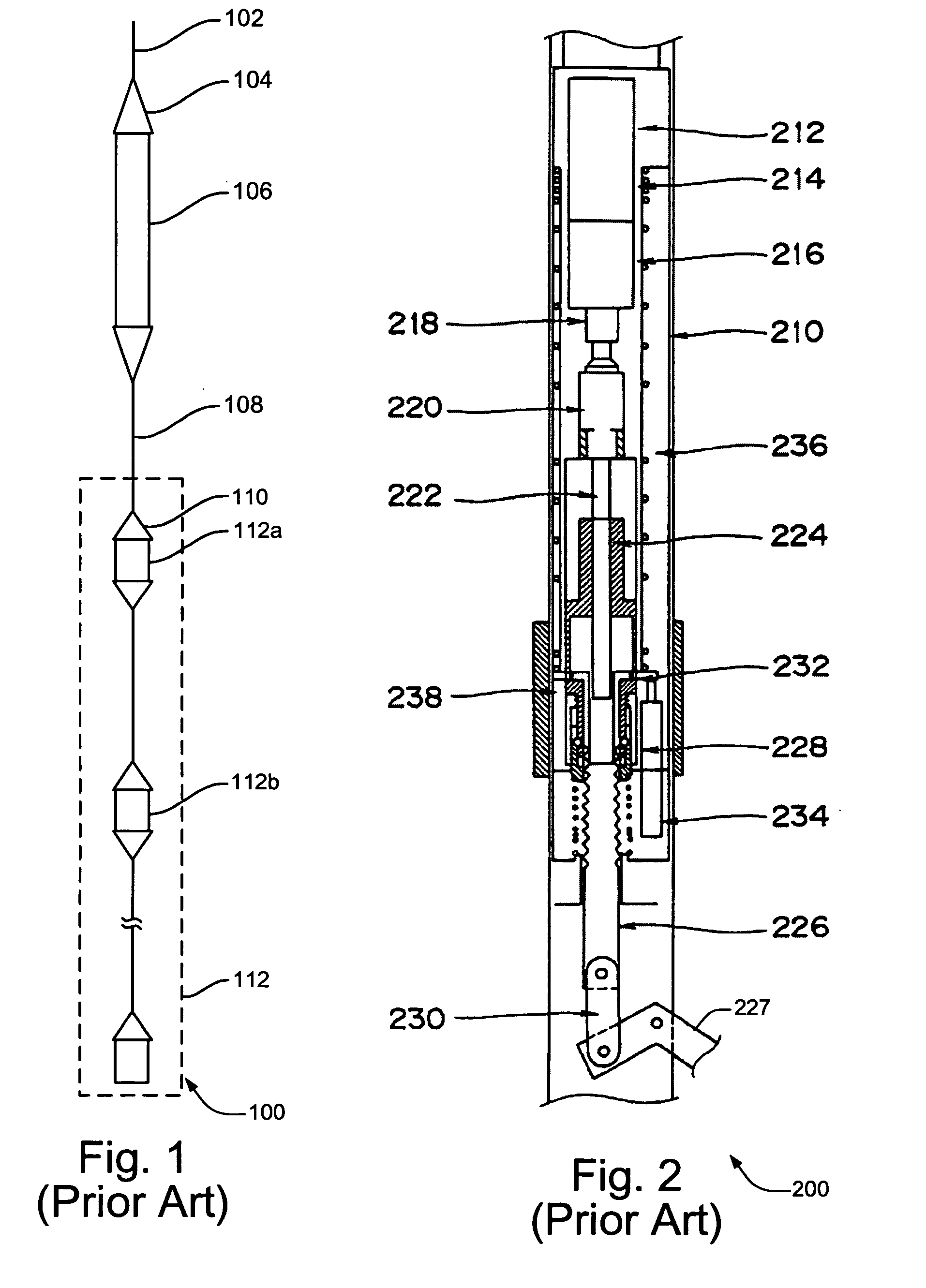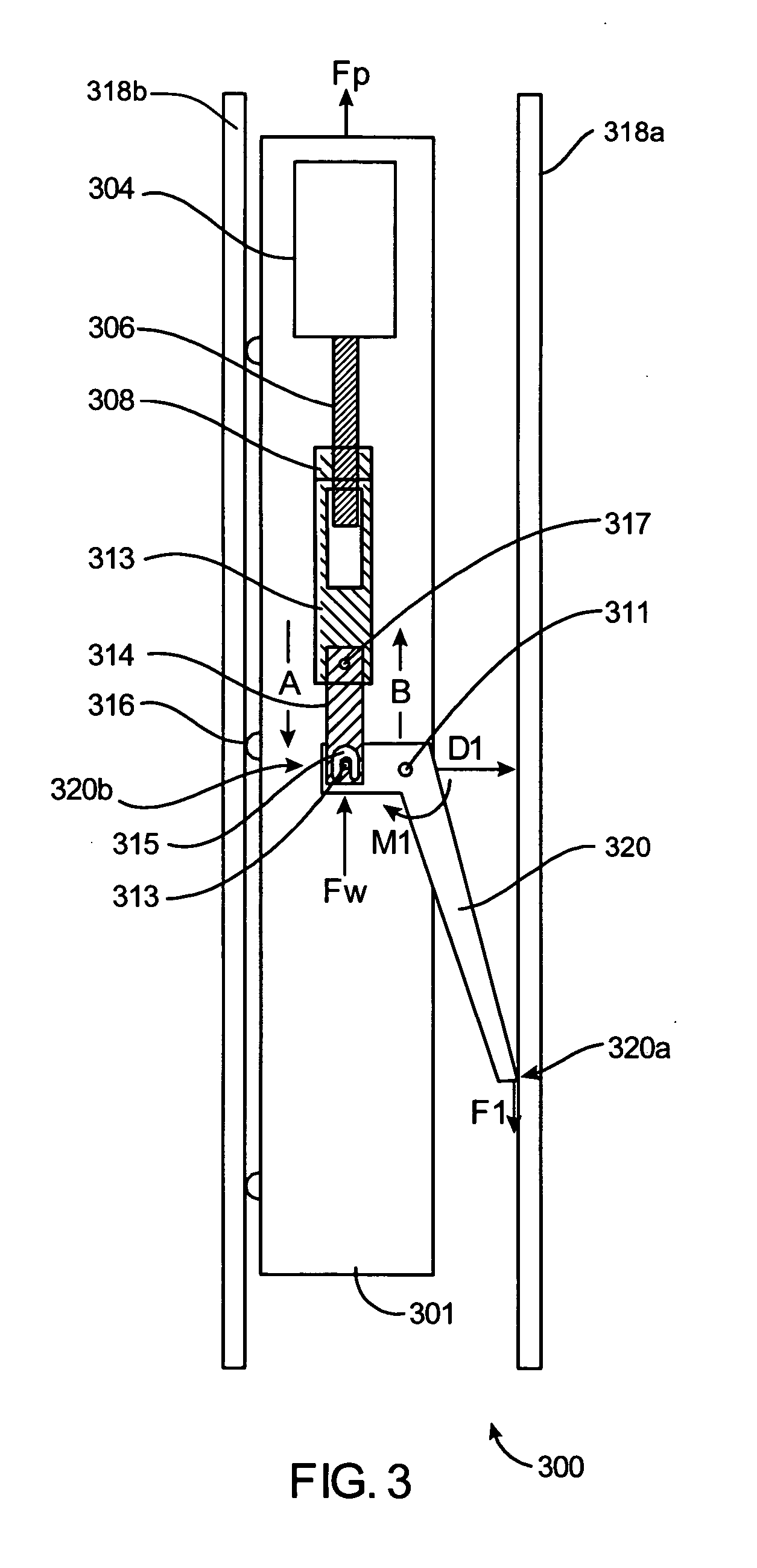Anchor arm for seismic logging tool
a technology of anchoring arm and seismic logging, which is applied in the direction of instruments, surveying, and well accessories, etc., can solve the problems of weakpoint mechanism breaking, force to be exerted on the first end of the anchoring arm, force to be exerted on the weakpoint mechanism, etc., and achieve the effect of increasing the cam radius
- Summary
- Abstract
- Description
- Claims
- Application Information
AI Technical Summary
Benefits of technology
Problems solved by technology
Method used
Image
Examples
Embodiment Construction
[0021] The present invention describes different techniques which may be used to improve multi-shuttle seismic array designs in order to provide improved seismic logging capabilities, performance, and reliability. One aspect of the present invention is directed to an improved anchor arm for a seismic logging tool such as, for example, a VSI shuttle.
[0022]FIG. 3 shows a portion of VSI shuttle 300 which may be used for implementing various aspects of the present invention. In the example of FIG. 3, VSI shuttle portion 300 is shown to be anchored to a wall portion (318a, 318b) of a borehole using anchor arm 330. According to at least one embodiment, VSI shuttle portion 300 may be similar in design to the VSI shuttle 200 of FIG. 2. In the embodiment of FIG. 3, the anchoring mechanism for shuttle portion 300 includes gear drive motor 304, ball screw 306, ball nut 308, push rod 313, anchor arm linkage 314, pivoting anchor arm 320, standoff portions 316, etc.
[0023] It will be appreciated...
PUM
 Login to View More
Login to View More Abstract
Description
Claims
Application Information
 Login to View More
Login to View More - R&D
- Intellectual Property
- Life Sciences
- Materials
- Tech Scout
- Unparalleled Data Quality
- Higher Quality Content
- 60% Fewer Hallucinations
Browse by: Latest US Patents, China's latest patents, Technical Efficacy Thesaurus, Application Domain, Technology Topic, Popular Technical Reports.
© 2025 PatSnap. All rights reserved.Legal|Privacy policy|Modern Slavery Act Transparency Statement|Sitemap|About US| Contact US: help@patsnap.com



